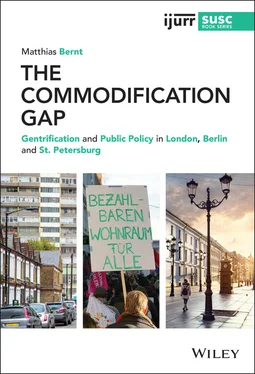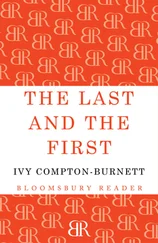Matthias Bernt - The Commodification Gap
Здесь есть возможность читать онлайн «Matthias Bernt - The Commodification Gap» — ознакомительный отрывок электронной книги совершенно бесплатно, а после прочтения отрывка купить полную версию. В некоторых случаях можно слушать аудио, скачать через торрент в формате fb2 и присутствует краткое содержание. Жанр: unrecognised, на английском языке. Описание произведения, (предисловие) а так же отзывы посетителей доступны на портале библиотеки ЛибКат.
- Название:The Commodification Gap
- Автор:
- Жанр:
- Год:неизвестен
- ISBN:нет данных
- Рейтинг книги:5 / 5. Голосов: 1
-
Избранное:Добавить в избранное
- Отзывы:
-
Ваша оценка:
- 100
- 1
- 2
- 3
- 4
- 5
The Commodification Gap: краткое содержание, описание и аннотация
Предлагаем к чтению аннотацию, описание, краткое содержание или предисловие (зависит от того, что написал сам автор книги «The Commodification Gap»). Если вы не нашли необходимую информацию о книге — напишите в комментариях, мы постараемся отыскать её.
—Jennifer Robinson, Professor of Human Geography, University College London, UK
—Manuel B. Aalbers, Division of Geography & Tourism, KU Leuven, Belgium The Commodity Gap
The Commodification Gap
The Commodification Gap
The Commodification Gap — читать онлайн ознакомительный отрывок
Ниже представлен текст книги, разбитый по страницам. Система сохранения места последней прочитанной страницы, позволяет с удобством читать онлайн бесплатно книгу «The Commodification Gap», без необходимости каждый раз заново искать на чём Вы остановились. Поставьте закладку, и сможете в любой момент перейти на страницу, на которой закончили чтение.
Интервал:
Закладка:
Third, neither universalising nor individualising modes of comparisons suffice to promote this process of iterative theory development. The problem, as I have pointed out with reference to Tilly, is not that particularising or universalising comparisons were misleading, as such, but that they are good in doing different things. While universalising comparisons work well to support a theory, individualising comparisons do exactly the opposite, demonstrating where a theory has reached its limits. The benefits and drawbacks of the two types of comparison are laterally inverted. What is needed is not a decision for the Scylla of universally valid categorisations or the Charybdis of thick descriptions of singular cases, but a way between the two that engages established theories with new empirical material that aims to build better explanations. In this sense, comparisons can be generative for a new round of theorising – but only when they are built upon a reference to existing theories and a commitment towards abstraction. Working with concepts is of key importance here.
Fourth, the relationship of theorising and empirical research in the course of investigation can be described as ‘ascending from the abstract to the concrete’, as Karl Marx famously put it in Grundrisse (1971 [1894). The abstract defines the object of empirical research that then leads to understanding the points where the theory stops explaining its particular objects and new theories must be integrated or found. This leads to an iterative back and forth movement between the empirical observation, abstraction and conceptualisation that is illustrated in Figure 1.2.
The study starts with a simple, abstract concept that seems to apply to all sorts of gentrifications at all times; moves on to the examination of actually existing forms of this abstraction; examines the interrelation of this abstraction with different concrete sociospatial formations; and then moves back to the abstract and examines the dialectic developed at a systemic level so far.
How can these recommendations be taken on board? In essence, restriction is demanded both with regard to the issues studied and the theories examined. In this respect, the following points form critical junctures for this book.
Definition of gentrification: I follow Clark’s (2005) definition of gentrification and count all processes as gentrification that ‘involv[es] a change in the population of land users such that the new users are of higher socio‐economic status than the previous users, together with an associated change in the built environment through a reinvestment of fixed capital’ (Clark 2005, p. 258). With this, I position myself within close range to what has become known as ‘supply‐side theories’ in the world of gentrification researchers. 3 FIGURE 1.2 The relationship of abstraction and empirical observation in this study.Two empirically observable issues are the focus of my interest. These are: (i) the investment of capital into the built environment (see Smith 1979, 1996) and (ii) the displacement of low‐income residents by more affluent users (see also Marcuse 1986). In my view, these are the basic conditions that make gentrification different from other forms of neighbourhood change, as well as the two prerequisites without which the concept of gentrification would cease to make sense. Achieving higher quality and returns on existing pieces of land and housing is (in the long run) not possible without putting work and capital into it. Capital, in turn, is only invested when a satisfactory rate of return is achieved that is higher than what is already gained from the piece of land in question. Gentrification and investment are, thus, causally connected. In a similar vein, gentrification is all but impossible without the exclusion of groups of people. If everybody was able to use land, housing and infrastructure in the same way in a particular area, displacement could not occur and would either become pure coincidence or be caused by something other than gentrification. 4 For all these reasons, reinvestment and displacement form the two key variables that are examined in all the cases studied in this research.
Structuralism as a starting point: The rent gap theory provided by Neil Smith (1979) builds the theoretical point of reference for this study. The main reason for this is that the theoretical ambitions of supply‐side theories have always been more universal than those of their demand‐side counterparts. Arguably this makes them a more attractive starting point for a comparative study. The goal is, thereby, not to verify or falsify supply‐side theories, but to examine how theories work in different contexts, identify their limits and suggest new theories.
Methodological substantivism, institutionalism and historicism: Gentrification is not analysed in a formalised way as an expression of abstract political economies, but it is situated in space and time. Thereby, institutions are given a primary role in the explanation of gentrification. These are understood as historically and geographically specific sets of formal rules, compliance procedures and standard operating practices that structure the relationships and the interactions between individuals (see Hall 1986, p.19). As such, they have more formal status than cultural norms, but they are not necessarily legally codified. With this definition, there is a wide variety of institutions, legal codes, administrative organisations, customary habits and traditions. This study, however, focuses on formal institutions – like forms of tenure, property regulations and rent laws. This choice is motivated by the cases analysed, in which formal institutions play a central role. It should not be seen as conceptually exclusive; depending on the context, other institutions (e.g. caste, family, ethnicity) might be more important.
Comparitivism: The project applies a comparative research strategy and examines heterodox cases of gentrification. This strategy is, however, distinguished from formal and static ways of comparing distinct cases, as it seeks to engage observable differences between the cases for the purpose of broader theorising. In order to stretch the boundaries of imagination and to ‘provincialize’ (Chakrabarty 2000) ill‐informed universalisation, it actively searches for dissimilar cases and seeks to interrogate different modes of interaction between the market and state in terms of gentrification. Heterogeneity is, thus, sought as a means to identify diverse combinations of factors.
The operational model of this research is the following: reinvestment is thought to result in displacement (which is the core of gentrification), while at the same time different institutions can impact on this interrelation in a way that can modify, alter and even prevent both reinvestment and displacement from happening. As a consequence, different forms of gentrification can emerge. The interrelation of these elements is expressed in Figure 1.3.
The empirical backbone of my argument stems from three empirical studies in London, Berlin and St Petersburg. As the universal conditions enabling gentrification, ‘namely, rent production, reproduction, and capture; production of gentrifiers and gentrifiable areas; and class displacement/replacement’ (Betancur 2014) are present in all three cities, one can assume it will be possible to find gentrification in each of them as well. However, as I will show, although instances of gentrification can be observed in all three cases, their dynamics, spatial patterns and causalities are highly diverse. In other words, I study a sample of dissimilar gentrifications, and while the cases studied support the idea that gentrification is a somewhat global phenomenon, they also demonstrate how this global phenomenon operates in fairly varied ways and is based upon different sets of local and national relations.
Читать дальшеИнтервал:
Закладка:
Похожие книги на «The Commodification Gap»
Представляем Вашему вниманию похожие книги на «The Commodification Gap» списком для выбора. Мы отобрали схожую по названию и смыслу литературу в надежде предоставить читателям больше вариантов отыскать новые, интересные, ещё непрочитанные произведения.
Обсуждение, отзывы о книге «The Commodification Gap» и просто собственные мнения читателей. Оставьте ваши комментарии, напишите, что Вы думаете о произведении, его смысле или главных героях. Укажите что конкретно понравилось, а что нет, и почему Вы так считаете.












